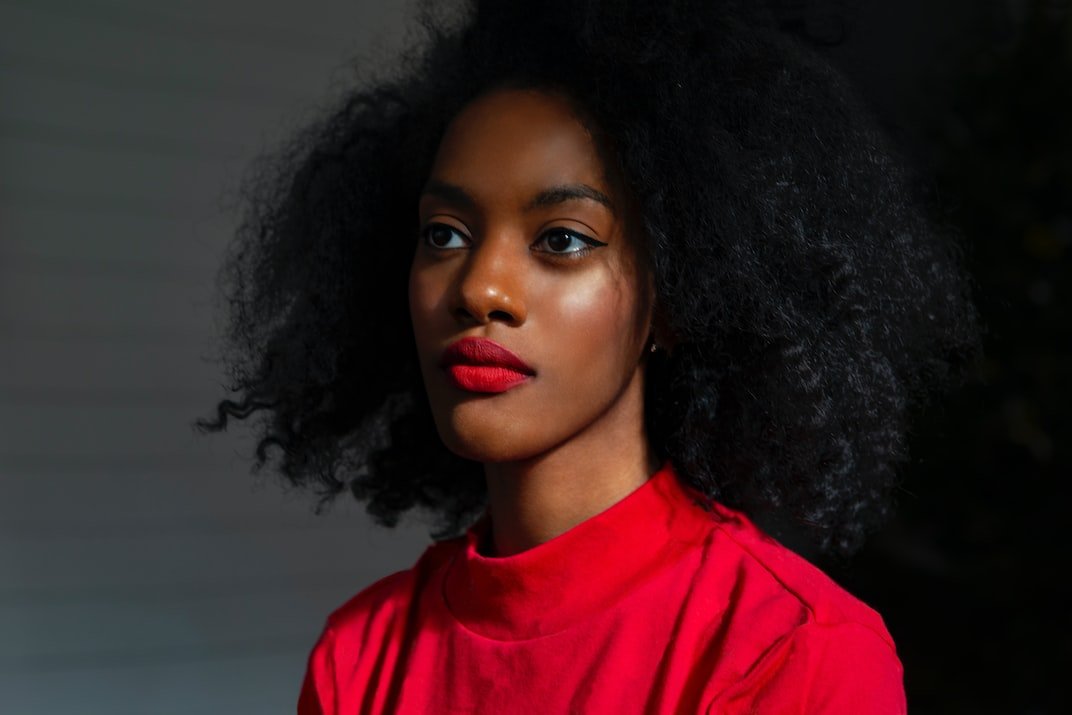Hair Loss (Part2) Understanding Alopecia Areata: Solutions and Support
Hey there, fabulous readers! Today, we’re diving into all things alopecia areata. Whether you’re experiencing this yourself or just curious, we’ve got everything you need to know, right here, plus some friendly advice and solutions. Let’s explore what alopecia is, its’ causes and different ways to manage it effectively. And don’t worry, we’ll guide you on where to find the best help in your country!
What is Alopecia Areata?
Alopecia areata is an autoimmune condition, where your immune system mistakenly attacks your hair follicles, leading to patchy hair loss. It can affect anyone, at any age, and is no respecter of gender, as men, women and children can all be affected by alopecia areata. However, it usually presents itself when one is in their teens, twenties or thirties. It can be quite sudden and distressing and affects approximately 147 million people worldwide. But the good news is, there are plenty of ways to manage it and support is available worldwide.
Causes of Alopecia Areata
In some cases there is a genetic cause to alopecia areata known as a “polygenic disease”, meaning that both parents must contribute a number of genes in order for the child to develop it. Scientists believe that having these specific genes will make a person more susceptible to developing alopecia if certain triggers are encountered in their lives such as stress, allergies, viruses, toxins, illness or psychological conditions (such as hair pulling), but in most cases there is no identifiable trigger. No matter which type of alopecia areata you have, the cause is the same, the immune system attacks the hair follicles causing them to not function properly to a point where new hair growth stops.
Alopecia areata does not make people sick and it is not contagious but it can certainly be a challenge to adjust emotionally, as losing one’s hair can be quite traumatic.
Global Statistics on Alopecia Areata
Knowing you’re not alone can be comforting. Here’s how alopecia areata stacks up around the globe:
Canada: Approximately 2% of Canadas’ population experiences alopecia areata, with about 40% of those affected being women.
United States: Apparently over 6.8 million people in the US are affected by this condition, with women making up nearly 45% of those cases.
United Kingdom: 1.7% of the population in the UK, is affected and about 42% of those cases are women
Australia: About 2% to 3% of Australians experience alopecia areata, with women comprising around 44 % of those affected.
Types of Alopecia
There are many different types of alopecia but below we will discuss the three main types, patchy alopecia areata, alopecia totalis and alopecia universalis.
Patchy Alopecia Areata
This type of alopecia is characterized by sudden hair loss. Some people report scalp discomfort with a burning, tingling, itching or soreness sensation before the affected hair falls out. Many compare this to having a ponytail that is tied too tight. Hair may start to grow back within 6 months or take as long as one year, as well, the first hair to grow in is sometimes white or gray.
Sometimes this type of alopecia will progress to a more severe type of alopecia areata.
Alopecia Totalis
Alopecia totalis affects a small percentage of people with patchy alopecia areata and involves more widespread hair loss causing complete or near complete scalp hair loss. The small patches where hair has fallen out in patchy alopecia areata multiply until then begin to join together.
Alopecia Universalis
This type of alopecia is more advanced than alopecia totalis and can cause near or complete scalp hair loss. The difference is that it involves complete hair loss on your head and face (including eyebrows and eyelashes) as well as the rest of your body. This is the most severe type of alopecia areata.
Treatments, Natural Remedies and Wigs
There is currently no cure for alopecia areata but treatment and remedies have the most positive outcomes when alopecia is recognized and treated when it first appears.
Medications
Treatments for most types of alopecia are basically the same and involve a combination of oral as well as topical medications. Not every treatment procedure works for everyone and it may be a journey of trial and error before you hit on a treatment or combination of treatments that work for you. A doctor who is well versed in alopecia will be someone who understands your condition and struggles. Below are the well knowns;
Topical Immunotherapy: Chemicals like diphencyprone(DPCP) applied to the scalp can stimulate hair growth.
Corticosteroid Injections: Steroid injections into bald patches can reduce inflammation and encourage growth.
Oral Medications: Immunosuppressants like methotrexate and corticosteroids like prednisone can help manage severe cases.
Minoxidil(Rogaine): An over-the counter treatment that can stimulate hair growth.
Natural Remedies
If we help our bodies stay strong and healthy our bodies will take care of us. Whether we are dealing with a simple cold or something more challenging like alopecia, giving our bodies the materials it needs to repair itself is very important.
Probiotics are important for gut health and to improve our immune system by helping our body not to overreact and cause inflammation when it perceives a potential threat.
Zinc is a trace mineral which helps to boost our immune system and aids in repairing our gut, a healthy gut is important for a normal immune response. As well, zinc is an essential nutrient for healthy hair follicles and hair growth.
Quercetin is a plant pigment flavonoid and has potent antioxidant properties that are known for their ability to reduce inflammation and bind to and fight free radicals.
Ginseng contains various pharmacological compounds and it works to reduce inflammation and boost immune function.
Lavender essential oil has many benefits with one of them being to heal and protect the skin. It works as a powerful antioxidant and it reduces inflammation.
Rosemary essential oil is commonly used to enhance hair thickness and growth, it has anti-inflammatory properties, promotes nerve growth and improves blood circulation. Research shows that applying rosemary oil topically can be as effective as minoxidil, a conventional treatment for alopecia areata.
Acupuncture increases blood flow and improves circulation to your scalp to stimulate hair follicles. It also works to reduce anxiety and depressions which are two conditions that many people with alopecia experience.
This is informational use only, always consult your healthcare practitioner before implementing natural remedies.
For further detailed information about the above remedies hop over to a blog by Dr. Axe.
Natural Hair Lace Wigs
If you are currently living with alopecia areata, you may be contemplating purchasing a wig. Wigs have come a long way and now look so natural that when we encounter someone wearing one, which is such a common incident in today’s world, we probably don’t even realize it.
Quality natural hair lace wigs are made with natural hair which moves, feels and looks just like your own hair. There are full wigs, half wigs, hair toppers as well as clip in bangs to select from, depending on your unique need.
A good hair stylist who specializes in natural hair lace wigs will have the knowledge, experience and skill to advise and guide you on your journey of selecting the perfect wig for your specific needs. She will be able to cut, style and color the wig you choose, to personalize it just for you. Have a look at our selection of Natural Hair Lace Wigs
Finding Help in Your Country
Alright, lovely readers, let’s talk about finding the best support right where you live. Whether you’re in Canada, the US, UK, Australia, there are helpful resources and professionals ready to help you on your journey. Here are resources to find professionals near you;
Canada:
Canadian Dermatology Association
Need to find dermatologist? The Canadian Dermatology Association’s directory has got you covered.
Women’s College Hospital (Toronto)
Specializes in women’s health, including hair loss treatments. Visit
Toronto Hair Transplant Clinic
For specialized hair treatments, check out the Toronto Hair Transplant Clinic.
Sure Hair International
Another great option is Sure Hair International
McGill University Health Centre(Montreal)
Offers dermatology services with a focus on women’s health. Reach out
United States:
American Academy of Dermatology (AAD)
The AAD’s Find a Dermatologist tool is perfect for locating top dermatologists near you.
Bosley
Renowned for hair restoration, visit Bosley for more information, they also free consultation.
Hair Club
Explore hair loss solutions at Hair Club
Cleveland Clinic
Known for its comprehensive care, including specialized dermatology services for women. Visit
Mayo Clinic
Renowned for its expertise in treating hair loss. Find more information here
United Kingdom:
London Dermatology Centre
offers specialized treatments for hair loss in women, check them out
The Trichological Society
Provides expert advice and treatments for hair loss. Visit
Australia:
Australasian College of Dermatologists
Use their Find a Dermatologist tool, this can help you locate professionals near you.
Royal Melbourne Hospital
Offers comprehensive dermatology services, including for women’s hair loss. Visit Royal Melbourne Hospital
Australian Trichology Centre
Specializes in hair loss treatments for women. Check out Australian Trichology Centre
Embrace Your Journey
We all face challenges in this life with some of them being more visible than others. Alopecia areata is one of those visible challenges. It can be devastating for a woman to lose some or all of her hair, but that woman is still the same beautiful, vibrant, loving, unique woman she has always been.
Remember you’re not alone and there are numerous ways to manage this condition. Explore different treatments, natural remedies, maintain a healthy lifestyle, and seek support when needed. Unfortunately there is no cure for alopecia areata but there are treatments and medications that a knowledgeable medical practitioner can suggest, as this person follows you through your journey.
Some women may decide to simply shave all of their hair off and rock a dynamic look that is natural and confident. Other women may love scarves and hats which can be creative, sophisticated and fun. Other women may choose a natural hair lace wig, maybe the same style and color which she previously wore or something totally different! The choice is yours, walk it out with confidence and style!
Don’t forget to check out our previous blog post on other types of hair loss such as Anagen Effluvium, Telogen Effluvium and Female Pattern Hair loss. These posts are packed with valuable information that could help you understand hair loss more and the best ways to manage and treat it


